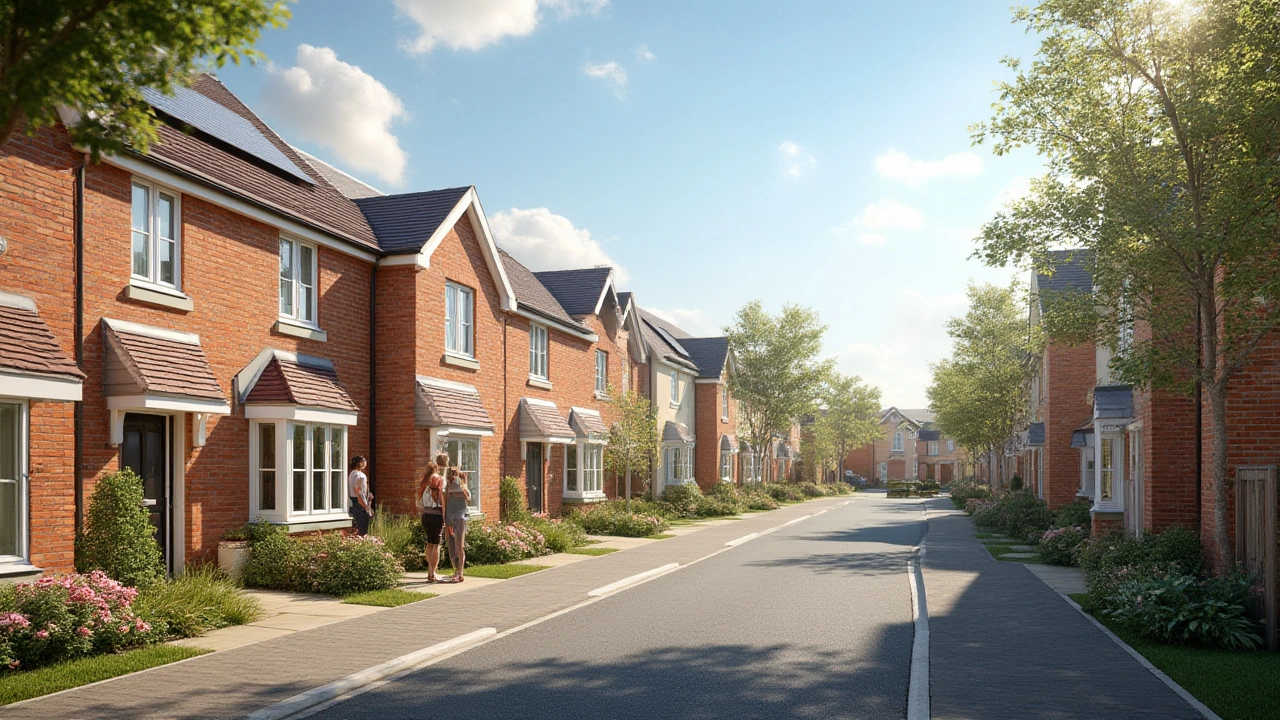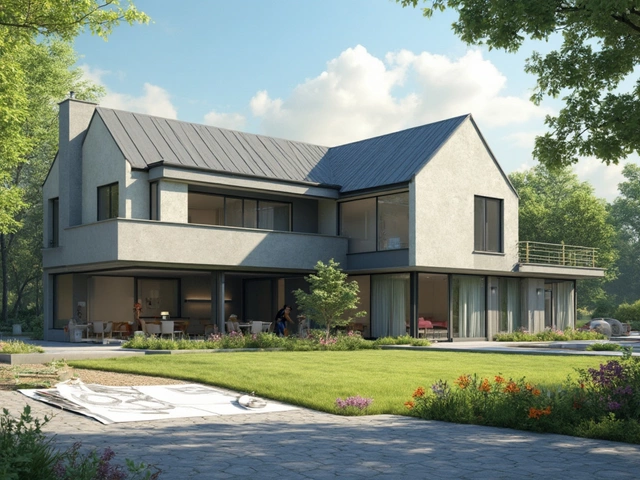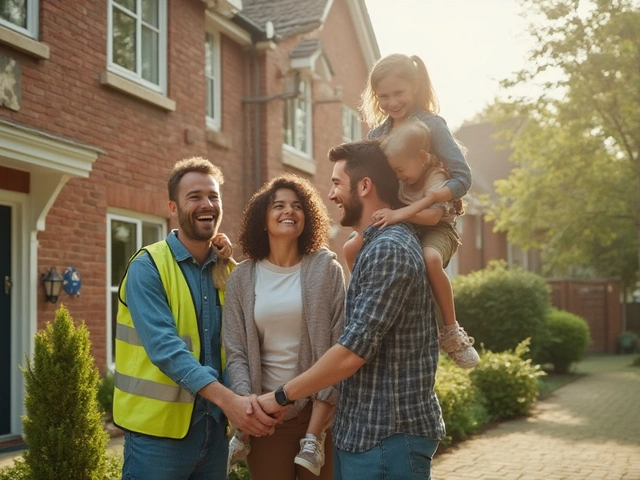Imagine walking into a house where you’re the very first person to turn the key. No creaky floorboards from past residents, no faded paint or outdated bathrooms—just that fresh, untouched feel. That excitement people get when they hear ‘new build’ isn’t just about crisp white walls and energy-efficient appliances. There’s a lot going on here, more than what you see in shiny brochures. But what exactly does “new build” even mean?
Breaking Down the Meaning of New Build
Ask ten people what a new build is and you’ll probably get a dozen answers. Some folks think it just means a brand-new house. Others imagine planned estates, lines of identical-looking properties built by big-name developers. Here’s the simple truth: a “new build” property is any home or structure that’s freshly built, having never been owned or lived in before. It could be a single custom-designed house, a flat in a towering apartment block, or the latest phase in a huge suburban estate.
Developers usually handle new builds from the ground up. That means no previous foundations, no bits of Victorian bricks hidden behind drywall. Even if a home is built on an old plot that previously had a house on it, as long as everything above the slab is new—it counts as a new build. The UK housing market, for example, uses this definition pretty strictly: if nobody’s lived there before, it’s a new build. That’s why buyers often get special warranties and incentives—they’re not just moving in, they’re setting foot in something never touched before.
Here’s something cool: new builds aren’t only about single-family homes. You see them in city centers (think glass-fronted apartment blocks), sprawling suburbs, or even as purpose-built student housing. According to the Office for National Statistics, nearly 210,000 new build dwellings were completed across England in 2023 alone. That shows just how big a part of the market this kind of property is.
But what really separates a new build from the rest? First, you get that blank slate experience—no inherited designs or run-down kitchens, just choices galore. Developers will often let buyers personalize things like kitchen fittings or bathroom tiles at certain stages. There’s also the legal angle: new builds come with warranties like the ten-year NHBC Buildmark warranty in the UK or the Home Warranty Insurance in Australia. If major structural issues pop up, you have a safety net.
There’s a financial side to it as well. Lenders often treat mortgages for new builds slightly differently, especially if you’re buying “off-plan,” which means before construction finishes. They’ll want extra reassurances, and buyers should be careful about completion dates. Because if you buy a new build flat in a block, for example, you’re counting on that developer to stick to the timeline.
Quick summary? New build means just that: totally, completely new. No previous owners, no history, just four walls and a roof built from scratch.
Why People Choose New Build Homes
There’s something special about being the first owner. For a lot of buyers, it’s like writing their own story from page one. But the appeal goes way beyond just being “new.” New builds are built to modern standards, with tighter regulations for things like insulation, fire safety, and energy use. That means less hassle fixing dodgy electrics or worrying about ancient plumbing.
One big draw? Energy efficiency. Most new builds come with things like double or even triple-glazed windows, high-spec insulation, efficient boilers, and—if you’re lucky—solar panels or heat pumps. The difference on your monthly utility bills isn’t just a marketing thing; real data backs it up. The Home Builders Federation reported in 2024 that owners of new build homes spent on average £1,600 less per year on their energy bills compared to those in older properties. That’s no pocket change.
Another reason buyers flock to new builds is location and community. New estates are often planned with parks, playgrounds, shops, and even schools folded into the design. You’re not just buying a house, you’re buying into a lifestyle. If you’ve ever tried house hunting in older neighborhoods, you know the pain of tiny bathrooms or no on-street parking—these things get baked-in with new builds, which tend to have more off-road parking and proper garden spaces.
There are, of course, trade-offs. Not everyone loves the “cookie cutter” look that comes with big developments. Some people worry about thin walls or smaller room sizes—valid concerns, since developers often optimize layouts for costs. But many new builds today are challenging that cliché. Some projects offer genuinely creative spaces and eco-friendly features that older homes just can’t match, like garden roofs or private EV charging points.
Buyers also like the peace of mind from those warranty schemes mentioned earlier. These are enforceable backups, not vague promises. If anything major goes wrong (like cracking walls or failing windows), you can rely on the developer or insurance-backed warranty for repairs, often for up to a decade. Existing homes? You’re on your own, unless you budget big for structural surveys and hidden repairs.
Customization is a huge plus too. If you move fast enough, a developer may let you tweak finishes, upgrade appliances, or even flex a room layout. This turns a basic houseplant into something more personal and functional. Just make sure to get all changes, costs, and timelines in clear, written form, in case things slip later on.
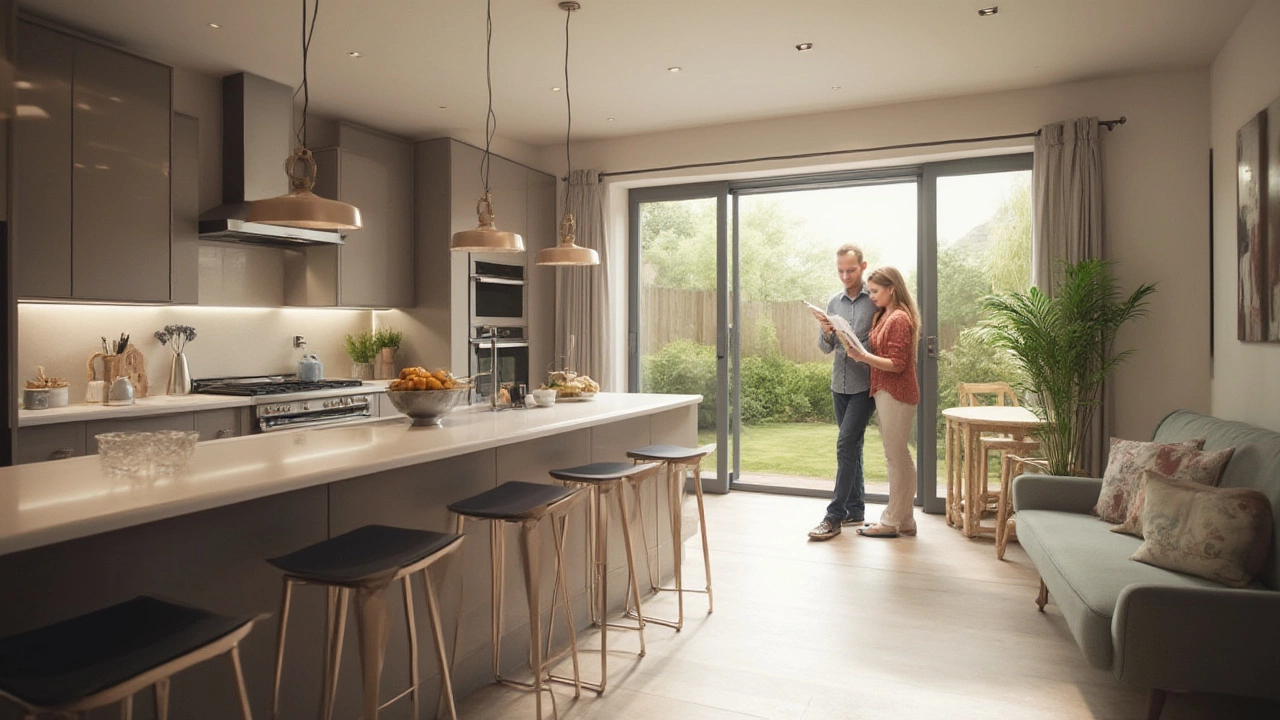
How the New Build Process Works: From Concept to Completion
Ever passed by a fenced-off field and seen it turn into a row of sparkling houses? That’s the anatomy of a new build. It all starts with land. Developers buy up plots—with or without existing structures—then design, plan, and apply for local planning permissions. If approved, architects and engineers get to work on technical drawings and design regulations. Here’s a rough step-by-step:
- Land acquisition and planning permission
- Detailed architectural and engineering design
- Demolition and site prep if necessary
- Groundworks and laying foundations
- Building the structure: walls, roof, floors
- Installing electrics, plumbing, heating, ventilation
- Interior fit—kitchens, bathrooms, fixtures
- Landscaping gardens, driveways, communal spaces
- Final inspections and snagging (sorting out any missed details)
- Issuing warranties and completion certificates
Buyers can get involved early at various stages. If you buy “off-plan,” for example, you’ll sign a reservation agreement and put down an initial deposit—sometimes as low as £500 in the UK or around $2,000 in Canada. During the build, you’ll often get invited for “hard hat” tours so you can check progress and spot any issues early. The big day is “legal completion”—when the developer hands over the keys, warranty documents, and you officially move in.
One thing to watch: delays do happen. Everything from bad weather to materials shortages can slow things down—if you’ve read about the 2022 timber shortage or rising brick prices, you’ll understand the risks. That’s why it’s smart to pay close attention to contract details and get completion dates in writing. If things run late, some developers will offer compensation (sometimes called “liquidated damages”). Just make sure you have a solid lawyer on your side—nobody wants to be left homeless because of a delayed move-in date.
Lenders also think differently about new build mortgages. Some banks have special mortgage products with longer end dates to account for construction, and often require a bigger deposit (between 10-15% versus 5% for older homes). If you’re buying a new build flat, be aware that some providers have stricter lending criteria, so always check before committing to a development or reservation fee.
Here’s a handy table comparing typical timeframes at each stage of the new build process:
| Stage | Average Duration |
|---|---|
| Land acquisition & planning | 4-18 months |
| Groundworks & structure | 3-8 months |
| Internal works & finishing | 2-6 months |
| Total (plot to completion) | 9-30 months |
So now you’ve got the gist of how these properties go from patch of grass to polished homes. It’s rarely simple, but buyers who enter the process with their eyes open usually end up calling the shots on the things that matter.
Tips to Make the Most of Buying a New Build
Stepping into the world of new builds can feel like navigating a maze—lots of options, big decisions, paperwork everywhere. The right moves early on make all the difference. Start with research: look at the track record of your chosen developer. If a developer’s name pops up in the news for the wrong reasons, treat it as a red flag. Some have a habit of cutting corners or using low-quality materials—dig into customer reviews and complaints before putting down that deposit.
Get your own surveyor or snagging inspector—even if the property is brand new. Don’t assume everything’s perfect just because it’s fresh off the builders’ line. Snagging surveys can spot small issues, like paint cracks, badly sealed windows, or wobbly fittings. According to the New Homes Review, around 95% of new build homeowners report at least one snag in the first year, so a professional eye is worth the modest investment.
Ask about warranties and aftercare. Developers must provide formal warranty policies—like the NHBC Buildmark in the UK, or region-specific options elsewhere. Get the details in writing. Find out exactly what’s covered and what isn’t (structural issues are usually included; minor bugs like sticking doors are often handled through an initial defects period).
Don’t be afraid to negotiate. Many buyers assume price is fixed with new builds, but incentives are common. You might score free legal fees, upgrades (think granite worktops or smart thermostats), or even a discount if you’re quick to reserve. Developers want to finish sales by key deadlines, especially at the end of the financial year, so timing your offer sometimes pays off. Look out for Help to Buy, First Homes, or local government schemes, if you qualify. These can make affording a new build much easier, especially for first-time buyers.
If you’re buying off-plan, get regular updates and written guarantees about completion dates. This isn’t just for peace of mind—it’s to keep the developer accountable. If you can, visit the site regularly to spot and flag potential problems early. Not everything can be fixed after you move in.
Finally, pay attention to the homeowner manual you’re given at handover. It details the property’s technical information, appliance manuals, and emergency contacts. File it somewhere safe on that first day—you’ll thank yourself the minute something needs adjusting.
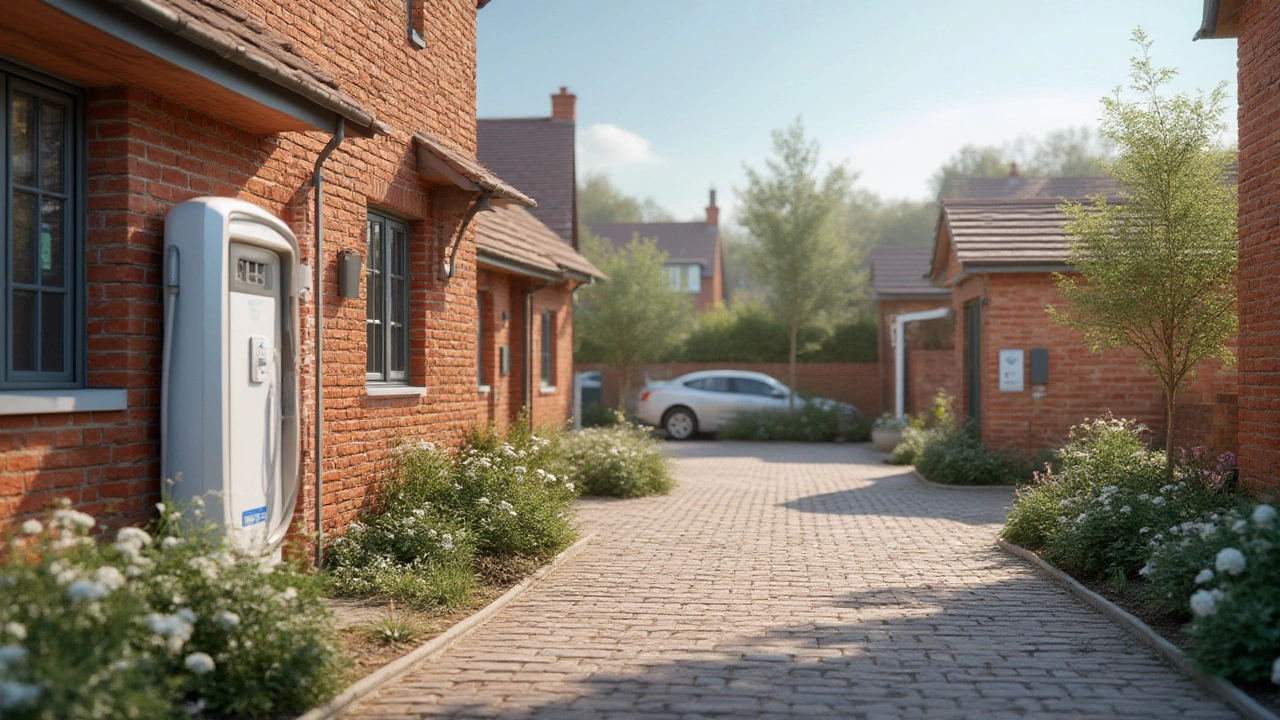
The Future of New Build Housing
With the world pushing toward greener living, the look and feel of new build homes is changing fast. Gone are the days of plain brick boxes lined up in endless rows. These days, you’ll see a real push for sustainable materials (like timber frames, recycled steel, or bamboo flooring), and clever technology everywhere. Developers are racing to meet stricter climate targets, rolling out heat recovery systems, super-thick insulation, and smart meters as standard.
Urban areas are experimenting with “passive homes”—buildings so well-sealed and efficiently heated that energy bills drop to a trickle. According to a 2024 report from the UK Green Building Council, over 10% of new builds in London now incorporate renewable energy systems, from ground source heat pumps to solar roof tiles. It’s not just marketing—buyers want cheap running costs and future-proof homes, not just a snazzy kitchen.
And it isn’t just about the environment. There’s a growing trend for new build homes that cater to the way people actually live today. Think adaptable living spaces, home offices, built-in digital infrastructure (hello, lightning-fast broadband), and communal facilities like bike storage or green playgrounds. Some larger developments are like mini neighborhoods, complete with their own shops, gyms, and health centers.
But there’s still a lot of debate around space standards, quality control, and affordability. Governments in places like the UK, Canada, and Australia are setting tougher rules for developers, demanding better homes—not just more of them. It’s all about balancing supply (who doesn’t want to see the housing waiting lists shrink?) with genuine quality, livable design, and that all-important curb appeal.
So the next time you see a glossy ad for a new build, remember: it’s much more than just a shiny new house. It’s a signal of where the whole property market is headed—greener, smarter, and hopefully far more suited to modern lives than ever before.

